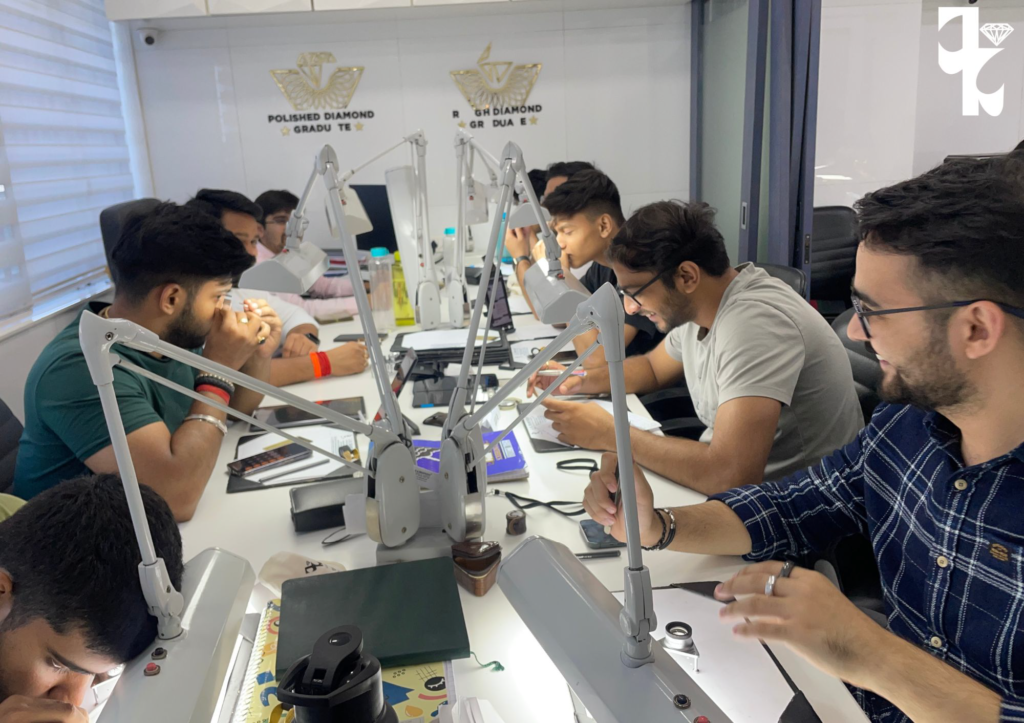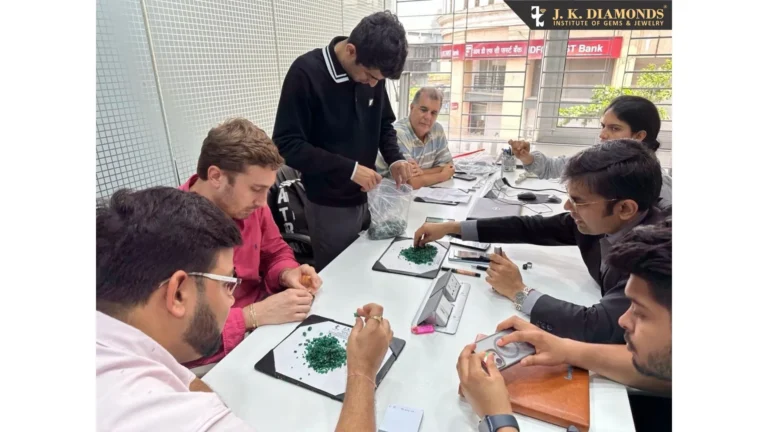Introduction to Rough diamonds
In this blog post, we will delve into the fascinating realm of rough diamonds – the natural, unrefined form of these precious gemstones.
Rough diamonds, also known as raw or uncut diamonds, offer a glimpse into the breathtaking beauty and complexity of nature’s creations. Let’s embark on a journey to understand what raw diamonds are and what sets them apart from their polished counterparts.
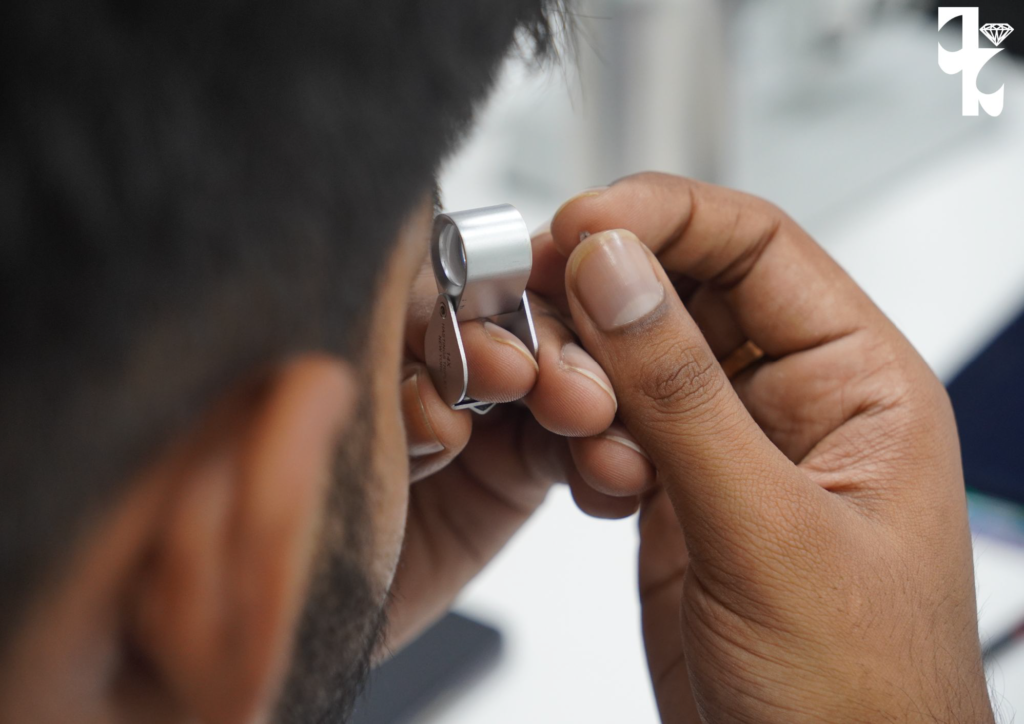
Differentiation: How Rough Diamonds Differ from Cut Stones
- Rough diamonds are in their natural state, straight from the earth, retaining their original shape and texture. On the other hand, cut stones have undergone cutting and polishing processes to enhance their brilliance, fire, and overall aesthetic appeal.
- While cut stones showcase the skill of artisans in shaping diamonds into mesmerizing gems, rough diamonds offer a unique allure with their raw, untouched beauty.
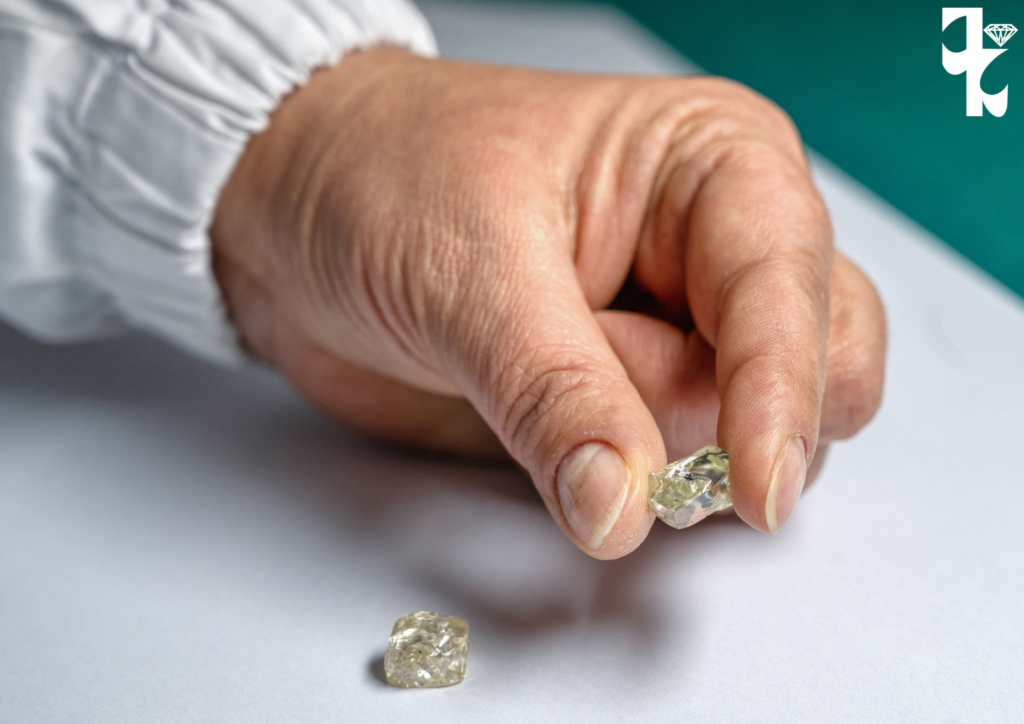
Key Distinctions Between Rough, Uncut, and Raw Diamonds
Rough, uncut, and raw diamonds are often used interchangeably, but there are subtle differences.
- Rough diamonds refer to diamonds in their natural, unprocessed state.
- Uncut diamonds specifically denote diamonds that have not been shaped or faceted.
- Raw diamonds encompass both rough and uncut diamonds, emphasizing their natural, unaltered state.
Understanding these distinctions will aid consumers in accurately assessing and appreciating the characteristics of these natural wonders.
Factors Influencing the Appearance of Rough Diamonds
- Crystal Shape: The natural shape of the diamond crystal affects its appearance. Common shapes include octahedral, cubic, and dodecahedral, each with distinct characteristics.
- Surface Features: Rough diamonds may have surface features such as pits, cracks, or growth lines, which can impact their appearance and potential for cutting.
- Color: The color of a rough diamond ranges from colorless to yellow, with variations caused by trace elements or structural defects. Color intensity influences a diamond’s value and appearance.
- Clarity: Inclusions and blemishes within the diamond crystal affect its clarity. Higher clarity diamonds have fewer imperfections and appear more transparent and brilliant.
- Transparency: Transparency refers to how much light passes through the diamond. Transparent diamonds allow more light to pass through, resulting in greater brilliance and sparkle.
- Size: The size of a uncut diamond influences its appearance and potential yield after cutting and polishing. Larger diamonds may have different cutting options compared to smaller ones.
- Cutting Orientation: The orientation in which a rough diamond is cut affects its appearance and yield. Diamond cutters analyze the crystal structure to determine the optimal cutting plan.
- Surface Texture: Surface texture, including features like smoothness or roughness, impacts a rough diamond’s appearance and suitability for cutting.
By understanding these factors, consumers can better appreciate the unique qualities of each uncut diamond and make informed purchasing decisions.
The Journey from Rough to Polished – How the Transformation Affects the Diamond’s Value
The transformation from rough to polished diamonds is a meticulous process that requires skill, precision, and artistry. This journey significantly impacts the diamond’s value, as cutting and polishing enhance its brilliance, fire, and overall aesthetic appeal. However, it’s essential to note that not all rough diamonds are suitable for polishing, and the process involves significant material loss.
Therefore, rough diamonds that yield high-quality polished gems command higher prices in the market.
At JK Diamonds, we offer courses that provide hands-on training in the art of diamond cutting and polishing, ensuring our students are equipped with the skills to navigate this transformative journey.
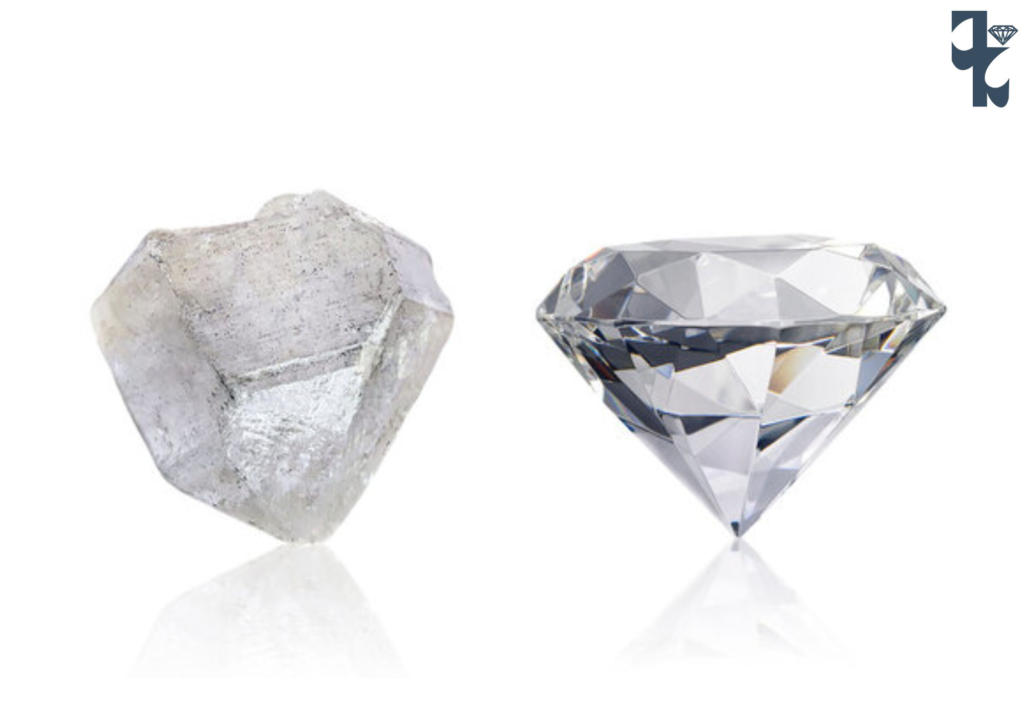
Significance of Natural Beauty in the Diamond Industry
In an industry often driven by perfection and uniformity, the natural beauty of rough diamonds stands out as a testament to the awe-inspiring wonders of nature. These unrefined gems possess a raw, organic charm that resonates with consumers seeking authenticity and uniqueness.
As the demand for ethically sourced and sustainable luxury grows, the allure of raw diamonds continues to rise, captivating a new generation of conscious consumers.
7 Factors Affecting the Market Value of Unpolished Diamonds:
- Size: Larger unpolished diamonds generally command higher prices due to their rarity and potential for yielding larger polished gems.
- Clarity: Unpolished diamonds with fewer inclusions and blemishes typically fetch higher prices, as they are considered rarer and more desirable.
- Colour: The color of unpolished diamonds, ranging from colorless to fancy coloured, significantly impacts their market value. Stones with intense, vibrant colours are often more valuable.
- Shape: The natural shape of unpolished diamonds influences their market value, with certain shapes, such as octahedral or cubic, being more desirable for cutting and polishing.
- Origin: Diamonds sourced from renowned or rare geological locations may command premium prices due to their provenance and unique characteristics.
- Quality of Rough: The overall quality and characteristics of the rough diamond, including its crystal structure, transparency, and potential for yielding high-quality polished gems, affect its market value.
- Market forces: The demand and supply forces in the diamond and jewelry trade naturally affect the valuation of rough diamonds. Primarily, prices of diamonds fluctuate due to changes in the demand or supply factors, the rest of the aspects and qualities of diamonds are secondary.
At JK Diamonds, we emphasize the importance of certification and offer courses on diamond grading, equipping our students with the knowledge and skills to assess diamond quality accurately.
5 Dispelling Myths and Misconceptions About Rough Diamonds:
- Rough Diamonds are Flawed: Contrary to belief, rough diamonds aren’t inherently flawed; they’re natural and may have unique characteristics that don’t necessarily diminish their value.
- All Rough Diamonds Have a Clear Market Value: The market value of raw diamonds can fluctuate based on various factors like global economic conditions and supply and demand dynamics.
- Rough Diamonds are Illegal or Unethical: While some associate rough diamonds with unethical practices, almost all diamonds around the world are responsibly sourced through legitimate mining operations.
- Rough Diamonds are Always Colourless: Rough diamonds come in a range of colours, including fancy coloured ones, offering diversity in the market.
- All Rough Diamonds Look the Same: Each uncut diamond is unique, varying in shape, size, colour, and characteristics.
In conclusion, rough diamonds embody the raw beauty and natural elegance of these extraordinary gemstones. From their unique formations deep within the earth to their transformative journey into polished gems, rough diamonds captivate with their innate charm and authenticity.
At JK Diamonds Institute of Gems and Jewellery, we are committed to providing comprehensive education and practical training in the world of diamonds, ensuring our students are equipped with the knowledge and skills to navigate this captivating industry. Whether you’re a seasoned collector or a novice enthusiast, exploring the world of rough diamonds is an enriching and rewarding experience.
